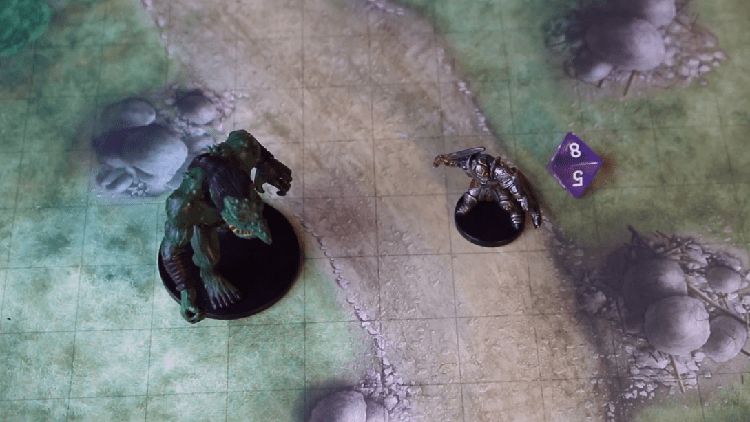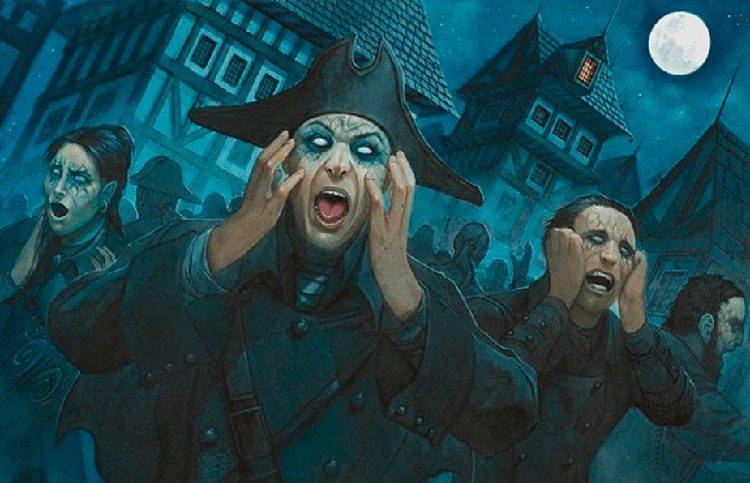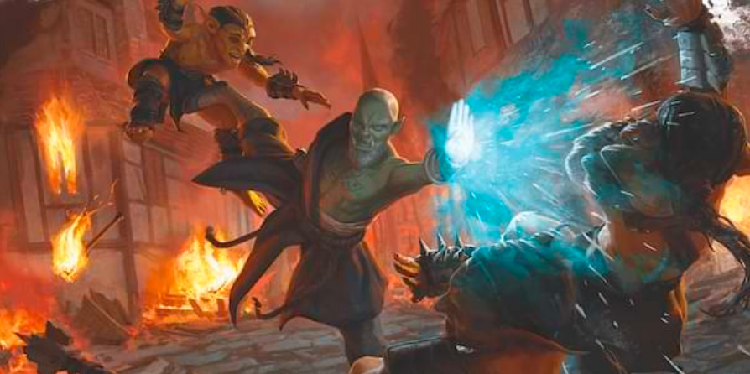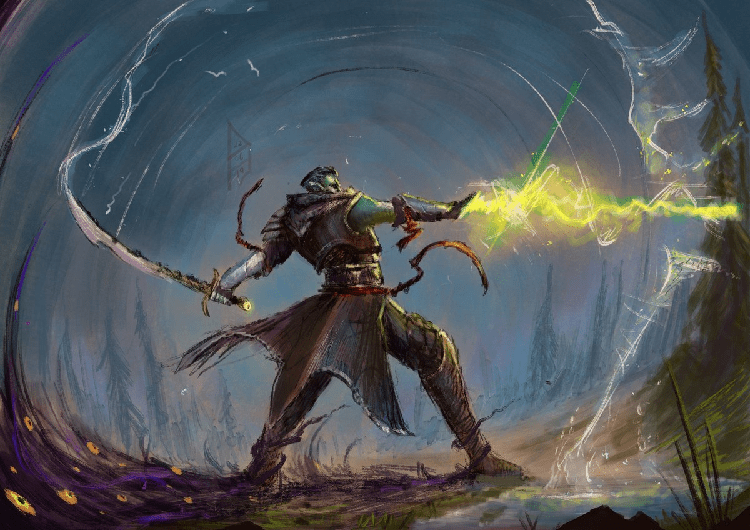Paladins have been an icon of holy magic and damage since the earlier editions of Dungeons and Dragons. Mixing both melee fighting along with the ability to heal or buff allies has led them to become icons of a supportive type character in other media.
From tanks in games to support in others to even leaders in shows, they are capable of a lot of things, but the one thing that most RPG players know is their ability to bring down god’s judgment.
I can’t say that I am a Paladin myself; I have played Paladins and similar D&D classes throughout various games, including but not limited to D&D, Baldur’s Gate, and Pathfinder. With years of experience, I know how to play and the unique interactions that Paladins have in D&D.
Let’s examine one of Paladins’ iconic abilities and what you can do with it. Welcome to a Divine Smite 5e Guide.
Smiting 101 (Shortcut)
In short:
- It is damage that you can add AFTER a confirmed hit
- Does 2d8 Radiant damage normally
- Consumes Spell slots
- Increases damage based on the level of the spell slot
- Does bonus damage on Fiends and Undead
So, you can use it when you see a critical hit or when the DM says you land a blow. It lets you keep the spell slot if you miss it and is a huge source of extra damage.
Smiting 101.5 (Full Explanation)
Divine Smite is the feature Paladins unlock at level 2. After landing a melee weapon attack, you can elect to smite the enemy. It uses up a single spell slot and does 2d8 Radiant damage on top of your regular weapon damage.
Against fiends and undead-type enemies, you deal an additional 1d8, so in total 3d8 damage. This increases with the spell level, so while a 1st-level spell slot would do 2d8, a 2nd-level would do 3d8, and so on. It caps out at 5d8 or a 4th-level spell slot.
This is not a D&D spell but a magical effect, and it does not require any components to cast, which means that it would work inside a sphere of Silence but would not work in an Anti-magic zone.
So long as you have spell slots, you can keep using this feature as much as you like. However, Paladins can only regain spell slots after finishing a long rest. As Half-casters, they only have half the amount of slots a regular caster has, which puts more importance on their spell selection.
In general, that is it; in the next section, we will discuss the “improved” version, and other smites that are not classified as Divine.
Smiting 102 (Improved Divine Smite)

Improved Divine Smite is learned at the 11th level of Paladin. Unlike the normal smite this does not cost a spell slot any longer. Whenever you hit a creature with a melee weapon attack, you deal an additional 1d8 Radiant damage. This is entirely free and can still be used with the normal Divine Smite.
Lore-wise this is due to your oath becoming powerful enough that you are permanently empowered with divine energy. It does less damage than an ordinary divine smite but is constantly active in exchange making it well worth the levels in Paladin.
Elective Smiting (Alternative Smites)
So aside from the Divine Smites, there are tons of other alternatives that you can use that are called smite. Here is the rundown on all the games’ smites and what classes gain access to them. Generally, they are spells or abilities that require resources, and while not free, they are still powerful when used correctly.
Banishing Smite
The heaviest and arguably the strongest smite. This is a 5th-level spell meaning that Paladins only have access to it at level 17. As a bonus action, you can cast this concentration spell on yourself. It lasts for one minute with additional effects if you hit a creature before the minute ends.
Upon hitting a creature, you deal 5d10 Force damage. Additionally, if this attack reduces the target to 50 hitpoints or less, they are banished without a saving throw.
When banished, the creature returns to its native plane; if the creature is native to the plane where the spell is cast, it is then moved into a demiplane where the spell will incapacitate it for the remaining duration of the spell.
Blinding Smite

This is a 3rd-level spell deals an additional 3d8 Radiant damage on a melee weapon hit. It also has a bonus action casting time while having the concentration tag and a one-minute duration. This spell ends after landing one hit.
A creature hit by this spell must make a Constitution saving throw against you, or else they are blinded. The creature can make the saving throw again at the end of each of their turns until they are no longer blinded.
Branding Smite
A 2nd-level spell that is concentration and takes a bonus action to cast. The pattern to most of these smites is that they last one minute and are concentration. On a hit, this spell does an additional 2d6 Radiant damage.
The hit target becomes visible if it is invisible, and the target glows a dim light in a 5-foot radius and cannot become invisible until the spell ends.
This means that even if you hit, you must maintain concentration to have the glowing effect. Some consider this the weakest smite, but I would say that its applications are just tricky to inflict.
Eldritch Smite
This is an Eldritch invocation meaning that only Warlocks have access to it. It requires at least five levels in Warlock along with the Pact of the Blade feature.
Once per turn when you hit a creature with your pact weapon you can expend a Warlock spell slot to deal an extra 1d8 Force damage plus another 1d8 per level of spell slot. Then you can knock the target prone if it is massive or smaller.
In essence, it is the Warlock version of Divine smite, but since Warlocks can only cast their spells at max power, it is always fully powered. It does, however, need more thought before usage since Warlocks have fewer spells than Half-casters.
Searing Smite
Back to the Paladins, this is a 1st-level concentration spell with one bonus action casting time. This spell does 1d6 Fire damage and causes the target to ignite in flames.
Until the spell ends, the target must make a Constitution saving throw at the start of each turn or take 1d6 fire damage. On a successful save, or if the target or a creature within 5 feet of it uses an action to put out the flames, the spell ends. It also ends if an effect douses the fire, such as being submerged in water.
Staggering Smite

4th-level but still a verbal concentration spell with a one bonus action casting time. It does 4d6 Psychic damage on a hit.
A creature hit by this spell must make a Wisdom saving throw. On a failed save, it gains a disadvantage on attack rolls and ability checks and can’t take reactions until the end of its next turn.
Thunderous Smite
The other 1st-level spell with the same casting tags as the other smites on this list. It is a concentration spell with a one-minute duration. Damage-wise, it does 2d6 thunder damage while letting everything within 300ft hear the sound of thunder.
If the target hit was a creature, it has to make a Strength saving throw or be pushed 10ft away and knocked prone.
Wrathful Smite
The final spell on this list is a 1st-level spell. Bonus action to cast and a one-minute concentration, and it does 1d6 Psychic damage.
Its additional effect is forcing a Wisdom saving throw from the target. They are frightened of you if they fail and have no adverse impact on success, and they can make a Wisdom check against your DC as an action to attempt to resolve themselves and end the spell.
Smite Comparison
Strictly looking at the damage, it does less on average than a standard divine smite. However each one has an additional effect attached to them, and it depends on you if you think that the effects are worth the cost. Additionally, you can chain this smite with a Divine Smite for extra damage at the expense of resources.
I think only Banishing, Blinding, Eldritch, and Staggering Smite are worth the costs. The others have negligible effects, making it even worse if your spell save DC is low, like not investing into Charisma and focusing on Strength instead.
Smiting Application (Combos)

With those smites explained, here are a few ways to apply Divine Smite for maximum effect.
Assassin
If you are looking for massive amounts of damage in a short span of time, you can combine Sneak Attack and Divine Smite. If you take Assassin from the Rogue subclasses, it gives you the Assassinate feature, which guarantees a critical hit if you attack a creature with the Surprise condition.
Since critical hits double the damage from the dice having a large amount of dice rolled simultaneously, you can pick out a target and try to delete them from round 1.
Smite Spamming
If you take levels into Warlock, you can start raining down smites with less care due to how Warlock spell slots function. Since they can only be the maximum level possible, your smite will always be at that level, mix that with short rest slot recovery, and you have two free Divine smites at max level every short rest.
What makes this possible is the interaction with Divine Smite, not needing Paladin spell slots but rather spell slots in general. So, even Warlocks, with their unique spell slot system, are allowed to smite with them. Who knew Warlocks, who make pacts with devils, make great Paladins?
Proper Smiting Conduct (When to Smite)

While I am listing all of the upsides of Divine Smite and its alternatives, this does not mean that you should smite whenever possible. Divine Smite is extremely good and one of the best low-level features in the game; however that does not mean you should ignore the rest of the game just to land a few more hits.
Here are my tips on when to smite, hang back, and use that spell slot or action for something else.
Tip 1: Long-Term Problems
Smite when you see something that will become a problem in the long term. For example, a ghost or a wizard is causing problems for your party.
Ghosts, with their possession ability and the unpredictability of Wizard spell casting may negatively affect your party the longer time goes on. These are prime targets for smiting as defeating them in the shortest time possible saves on resources used when drawn out.
Tip 2: Target Priority
Sometimes in battles, you and your party are caught in combat with numerous opponents. In this scenario, you must distinguish which enemy needs to go down first and if you can reach them.
A commander leading his troops would be a great target as defeating him would cause discord in the ranks. Adversely, someone at the back, such as a strategist, would be a lousy target since it would mean leaving your team behind.
Tip 3: Emergency Situations
Sometimes you need to use your spells more than your slots, or perhaps your action economy is necessary to push a puzzle into place or decipher ancient celestial texts. While the other party members may still be fighting, it’s best to do what your party members cannot or perform worse.
While yes, you can do large amounts of damage, so can your Fighter or Barbarian. Especially in dire situations where your action and spell slot to heal could come in handy, saving the life of your cleric.
Tip 4: Delegate Roles
Make sure that you and your party are clear on what all of your strengths and weaknesses are. While it would be great to have a party entirely made up of combatants, it would leave you less than capable in a social situation or when some creative casting cures the case. Of course, if the campaign is meant to fight and only fight, then be my guest.
FAQs
Question: Can You Divine Smite Multiple Times?
ANSWER: Yes, you can. You can smite whenever you land a hit, which is limited by the number of spell slots remaining.
QUESTION: CAN DIVINE SMITE MISS?
ANSWER: No, it cannot. Divine smite can only be activated upon landing a hit, not attempting an attack. Divine smite will only do no damage if you hit an illusion or a creature with radiant damage immunity.
QUESTION: IS DIVINE SMITE OVERPOWERED?
ANSWER: It depends on the situation. In isolated combats, it is a powerful feature, but since paladins have a small pool of spells, they would run out of smites quickly if they do not control their usage over the course of a day.
Since paladins can only regain their spell slots on a long rest, multiple encounters can balance out divine smite in one day.
Conclusion
Divine Smite is a powerful ability that has many different versions with different effects. In a player’s hands, it could make the Paladin a determining factor in the party’s survival. Alternatively, as a DM, you must plan out your campaigns more if you want to use it against the party or let your party use it.
In short sessions and individual encounters, it is strong, but since it consumes scarce resources, it leaves a Paladin empty before the day ends. Use it wisely, but feel free to smite anything in your way.
- Prestige Classes 5e Guide - September 20, 2022
- Rod of the Pact Keeper 5e Guide - September 15, 2022
- Sanctuary 5e Guide - September 14, 2022

